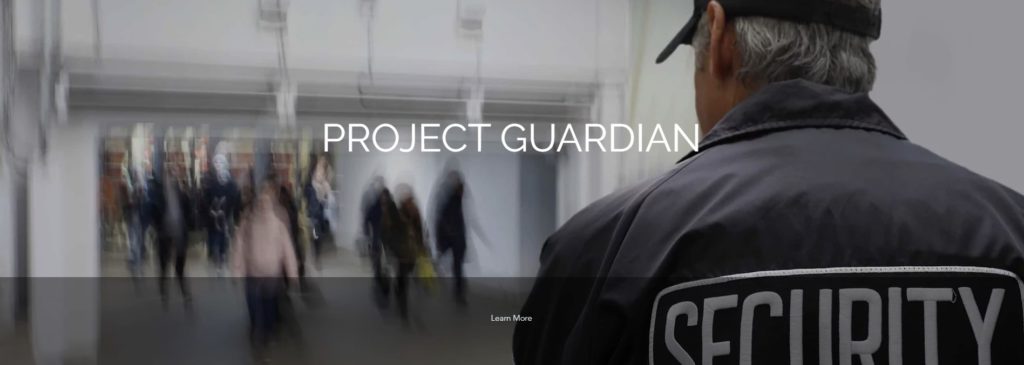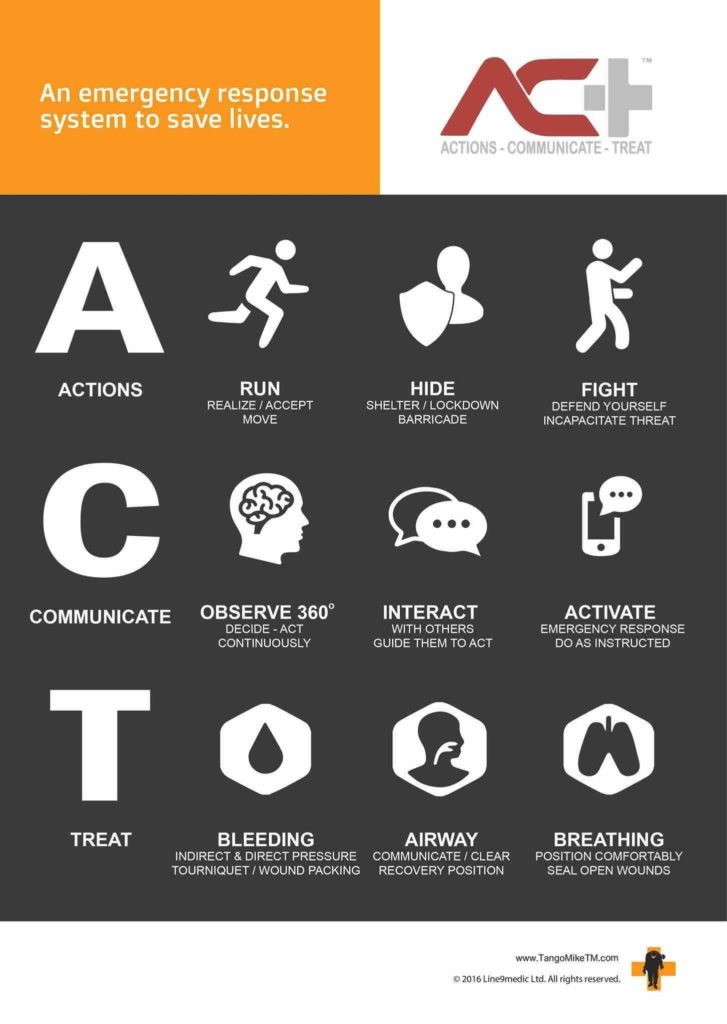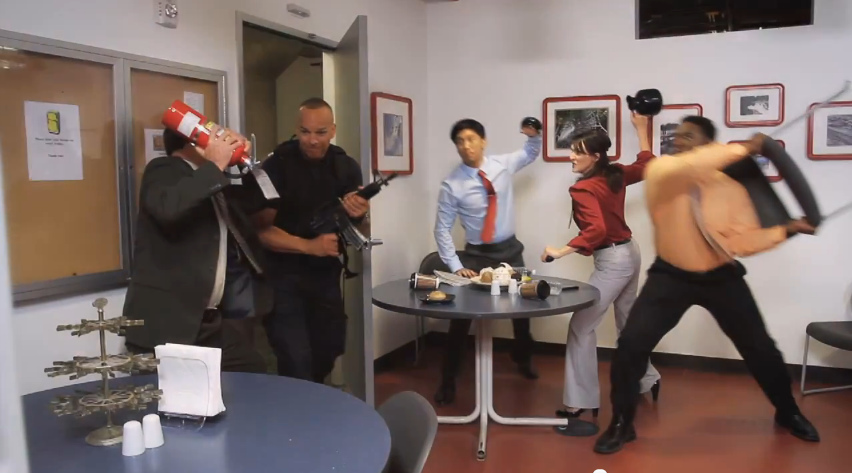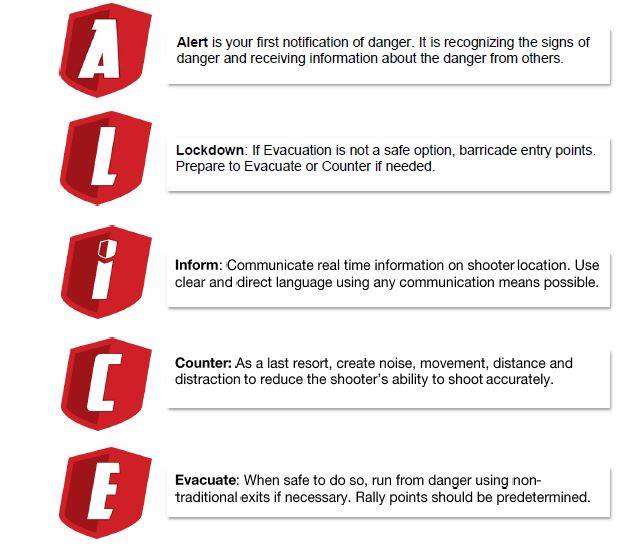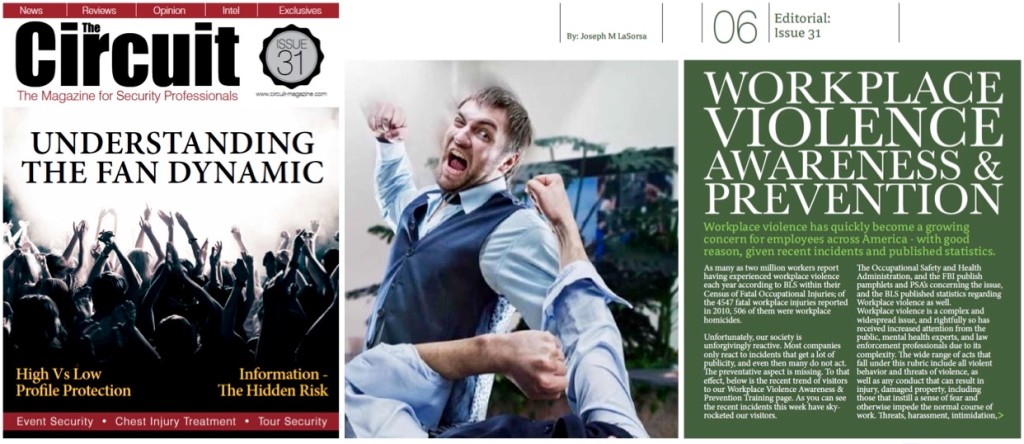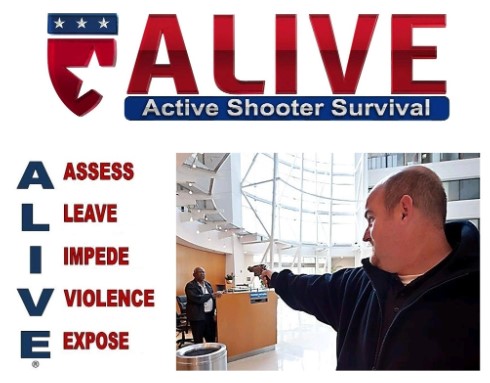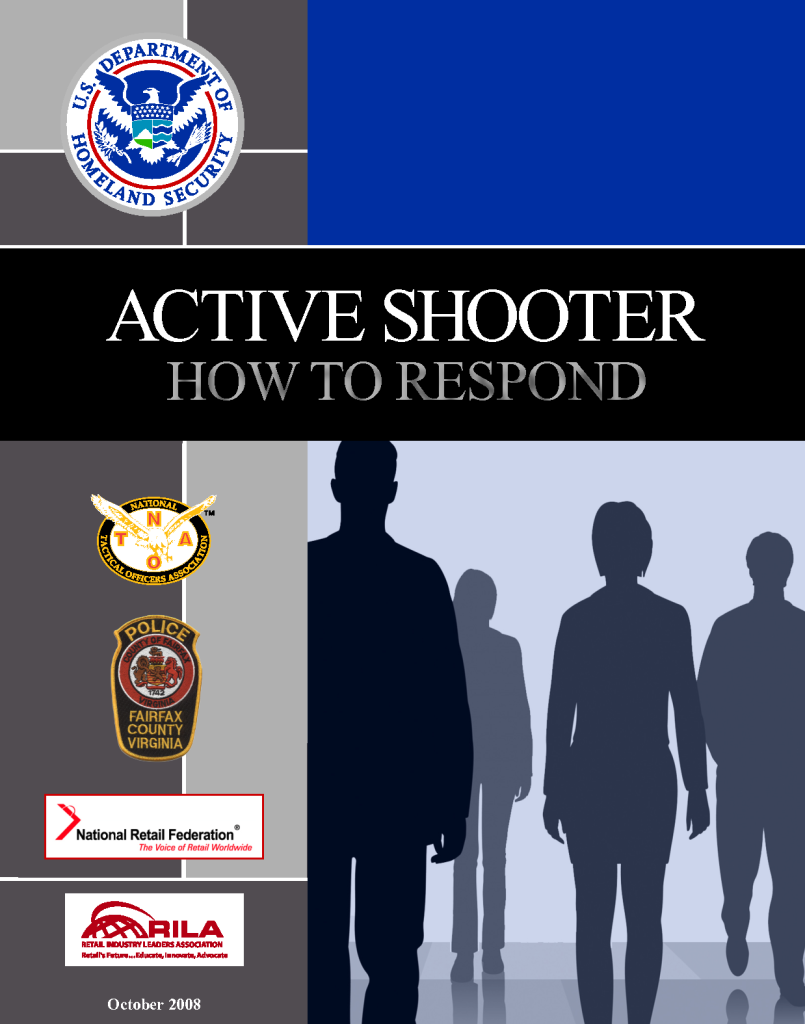Active Shooter Preparedness – Optimize Your Options to Optimize Your Survival

“Of all the animals, man is the only one that is cruel. He is the only one that inflicts pain for the pleasure of doing it.” – Mark Twain
The most important component of effectively preparing for an Active Shooter scenario is developing logical options to an illogical problem; there is no one right answer and many options are required as the circumstances are never the same. As with any solution to a variable problem, a cookie cutter response is not going to be ideal and while the ‘devil is in the details,’ the ‘angel is in the concept.’
There is a singular constant among those who evacuated an active shooter scenario…
They survived.
If we take a minute to consider historical examples to learn from their errors, we can easily see that in Columbine, where the students were told to sit in the library and wait, the attackers’ plan was facilitated as the students were later shot due to the shooters knowing where to go. Additionally, as the saying goes, “When seconds count, cops are only minutes away,” therefore the options you develop should be simple enough to be implemented immediately without unnecessary or complicated ‘flow chart’ type of decision making.
–
Plan for the Crisis
Security assessments are a vital component to the planning process as they address issues such as security concerns, hiring and firing protocols, vandalism and theft, etc. The assessment should focus on a specific issue, such as an active shooter vs. other security concerns, however the general concepts of access control, visitor screening, crime prevention through environmental design, etc. should be integrated across the spectrum of prevention and intervention programs as the main goal of a security assessment and threat management program is to increase safety and security. Perhaps one of the most important factors of an effective program is a way for employees and patrons to submit their concerns in a positive way, such as an anonymous drop box or a dedicated email address.
–
GUIDE FOR DEVELOPING HIGH-QUALITY SCHOOL EMERGENCY OPERATIONS PLANS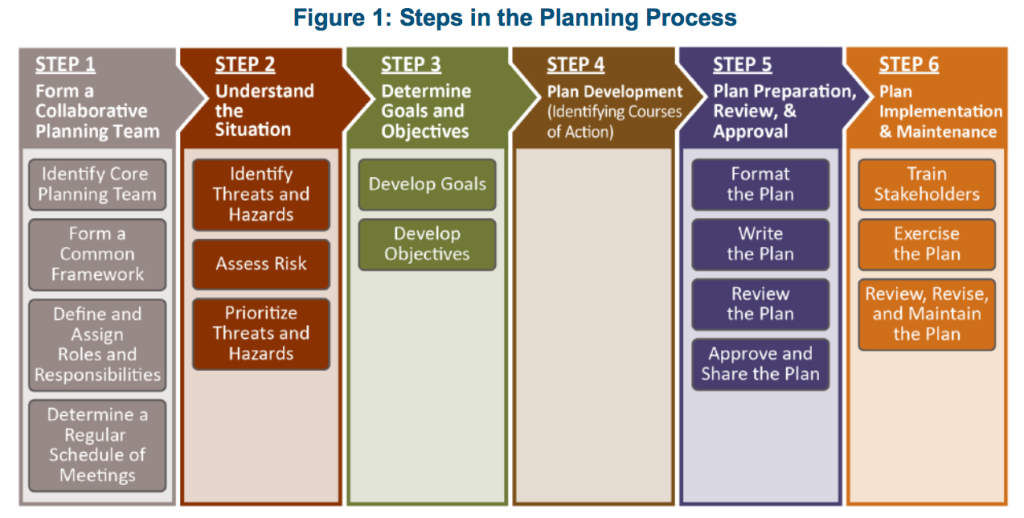
–
For most facilities, the consideration for a security system or crisis planning derives from the concern for protecting their assets, such as valuable property or materials. However, lets consider the most valuable property of all, our children. Considering this, the risk equation of R = T x A x V (where R is risk, T is threat, A is asset and V is vulnerability) the threat (likelihood of an incident) is almost irrelevant as the asset is so important that you cannot accept any vulnerability, yet it is common for schools to have relatively lax security measures. Below, are ten questions to ask school administration about what they train teachers and students to do during an active shooter or violent intruder event from the ALICE Training Institute:
- What is the school’s training/policy when it comes to active shooter or violent intruders?
- What does research show that supports the school’s plan for active shooter or violent intruder?
- Is the school’s plan supported by the recommendations from the Department of Education or Department of Homeland Security?
- If the school has a lockdown-only response, what are teachers telling my child to do if the attacker gets in the room?
- How is the school training students for violent intruder or active shooter events?
- Does the school run drills?
- What steps are taken to ensure that my child knows the layout of the building?
- Who is authorized to make an alert announcement during an emergency?
- Are codes used to indicate there is violence in the building?
- What options do students and teachers have in an active shooter or violent intruder events
–
Some Thoughts on Active Shooter Incidents – Art Dorst
–
One of the easiest and most critical aspects of an evacuation protocol for an organization is identifying safe-havens. Ideally, these would not be the parking lot or street corner that is used for fire drills where the students or patrons gather for accountability, but rather a location within running distance that leaders are aware of in order to guide the masses to. Also note: posted and published plans are particularly vulnerable as they may facilitate the attacker in their cause.
–
–
Guidance for Response: Run, Hide, Fight
The more logical options developed, ‘tools in the toolbox’, will assist in enabling rapid determination of the most reasonable way to increase the chances of survival. Remember the basics; Run, Hide, Fight. The primary focus should be to evacuate; if there is safe way to get out, that should be the goal of anyone and everyone. Being aware of the various exits will facilitate the decision making process and again, provide much needed options. If it is certain that a safe path of evacuation is not possible, hiding may be the next best option. Knowing where to hide is also critical; active shooter’s intent is to find people, therefore the best hiding place is probably where people are not expected to be, while not restricting your options for evacuation. As a last resort for a hiding place, lock and barricade the door to limit the attackers ease of access and provide as much between you and the attacker as possible for ballistic protection. Remaining silent, including your cell phone, radios, televisions, etc. is also critical if your solution is to hide.
As an absolute last resort if you cannot effectively hide or evacuate, and if your life’s in danger, take action against the shooter. Utilizing improvised weapons with overwhelming aggression and violence is the best possible solution in this case. Commitment to your decision is critical.
ALICE is an effective way of implementing the FBI’s ‘Run, Hide, Fight’ methodology. ALICE stands for Alert, Lockdown, Inform, Counter, and Evacuate.
–
Remember: ALICE is not an acronym to be followed chronologically as ‘Run, Hide, Fight’ is, but simply a mnemonic to assist in memory under heightened stress.
–
RUN. HIDE. FIGHT.® Surviving an Active Shooter Event – English
–
Train Your Staff
Patrons, customers, students and clients are more likely to follow the lead of teachers, employees, etc. during an an emergency, train accordingly. Again, the cookie cutter response is not as effective as analytical decision making given logical options. Therefore, the best optimizer of the survival of everyone in the facility is to train your staff. Create an Emergency Action Plan (EAP) with training exercises focused on preparing your staff to effectively respond and make the right decisions based on the circumstances at hand. Recognizing the incident and reacting quickly is critical. Confidence in the decision to react will come from effective training and exercises. Including local law enforcement and first responders in those training exercises is also critical in establishing cohesion of efforts in emergency action plans. Additionally, ensure there is an effective emergency notification system to alert various parties of an emergency including law enforcement and emergency medical services and ensure there are multiple (at LEAST two) evacuation routes in every gathering area.
Workplace Violence Awareness & Prevention Training
–
–
Expecting Law Enforcement to Arrive
Law enforcement’s purpose is to stop the active shooter as soon as possible; try to remain calm, and follow officer’s’ instructions while keeping hands visible at all times. Avoid making quick movements toward officers, such as holding on to them for safety, and exit in the direction from which officers are entering.
–
–
Try to provide as much information as possible, such as the location of the attacker, number and description of the attacker, etc. Also inform of any potential victims but remember, the first responders may not stop to help injured persons as their focus is to stop the attacker.
Expect to be held or restrained by law enforcement; they need to identify who is who and this will assist in that effort. Do not try to leave or go back inside the building until authorized to do so, the situation is under control and everyone has been identified. Gather your thoughts in anticipation of being questioned.
–
–
–
Active Shooter Preparedness & Response Resources & Materials
The FBI and DHS has developed a series of materials to assist businesses, government offices, and schools in preparing for and responding to an active shooter. These products include a desk reference guide, a reference poster, and a pocket-size reference card.
- Guide for Developing High-Quality School Emergency Operations Plans
- Active Shooter Booklet
- Active Shooter Pamphlet
- Active Shooter Poster
- Active Shooter Poster (Spanish)
- Active Shooter Pocket Card
- Active Shooter Pocket Card (Spanish)
- Planning and Response to an Active Shooter: An Interagency Security Committee Policy and Best Practices Guide
- DHS Active Shooter Preparedness Web-Page
–
‘Options for Consideration’ Active Shooter Preparedness Video
Options for Consideration demonstrates possible actions to take if confronted with an active shooter scenario. The video also shows how to assist authorities once law enforcement enters the scene. You may also access the video on YouTube.
Conducting Security Assessments: A Guide for Schools and Houses of Worship Webinar
This Webinar will help participants learn the importance of conducting a security assessment of their facility, how to find the right support in conducting that assessment, applicable security measures, and how to create a security culture that engages and involves all the members of their respective academic or faith community.
Active Shooter Webinar
This 90-minute Webinar can help the private and public sector understand the importance of developing an emergency response plan and the need to train employees on how to respond if confronted with an active shooter. The presentation describes the three types of active shooters–workplace/school, criminal, and ideological–and how their planning cycles and behaviors differ.
–
Feature Image Photo Cred
———————————————————
Joseph M. LaSorsa, CPP® is currently employed as a senior partner managing and conducting: Protective Operations Training Courses, Executive Protection & Bodyguard Services, Risk Management Consultations & Seminars, Workplace Violence Prevention Seminars & Intervention Services, Security Consultations & Seminars, Private Investigations and Technical Surveillance Counter-Measures with LaSorsa & Associates – an International Protection, Investigations & Consulting Firm.

